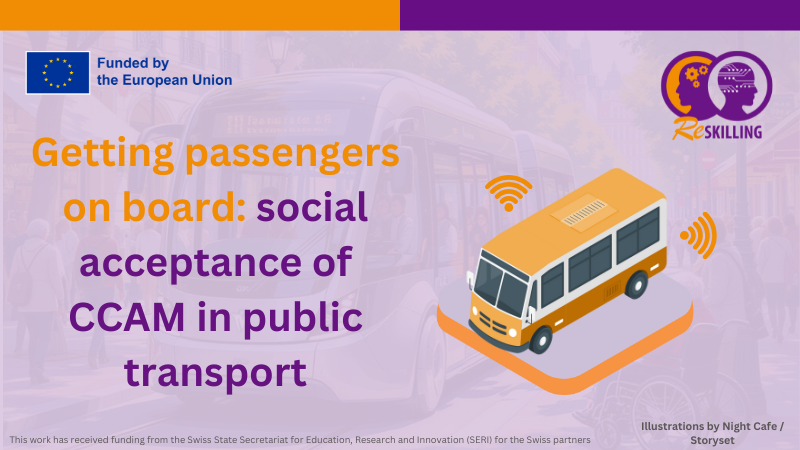Getting passengers on board: social acceptance of CCAM in public transport

When people thought about the “future of transport” a decade ago, many pictured flying cars - blame it on the sci-fi movies! The reality looks a little different, but not less fascinating. Today, we are witnessing the rise of Connected, Cooperative and Automated Mobility (CCAM): from automated shuttles being tested through the ULTIMO project to driverless metro lines already running in Paris or Thessaloniki.
Technology can deliver impressive results, no doubt on that, but does it instantly earn people’s trust? Communities often meet new mobility solutions with caution, even fear. And what value does it bring if people hesitate to use it?
A self-driving vehicle may be safe, efficient, and sustainable, but without public trust, the seat will be empty. And research confirms this gap.
The recently completed SINFONICA project found that while awareness of CCAM is high, actual use remains limited. Curiosity is often mixed with scepticism or uncertainty, especially among vulnerable groups such as older adults or people with disabilities. Positive emotions like trust and excitement are still the exception rather than the rule1.
People want reassurance, on both technical and personal safety. Women in particular raise concerns about traveling at night, calling for visible emergency buttons and human support options. Others fear being “locked out” by digital systems or losing the small yet meaningful human connection of a driver’s greeting – the sense of being part of a community, which is also what public transport represents. While these insights largely reflect urban settings, rural areas reveal a different picture: many communities still ask first for the basics - frequent, reliable public transport.
"I live in a rural area. The bus runs once an hour to the nearest train station or shops. If CCAM could replace the bus and make things more flexible, that’d be great… 2”
Social acceptance also applies to those working in the sector. Automation will disrupt traditional roles like drivers and dispatchers while creating new ones in system supervision, ICT maintenance, and data management. If workers see CCAM only as a threat, resistance will grow. If they see pathways for reskilling and career development, acceptance will rise. After all, every worker is also a passenger.
This is the focus of our project ReSKILLING, which aims to analyse the employment impacts of CCAM, identify new skill needs, and develop training programmes. At the same time, it addresses the sector’s long-standing labour shortages and its struggles to attract a more diverse workforce.
So how do we get passengers and workers on board? Through education, engagement, and co-design. Pilots must involve citizens directly, just look at the EU-funded SHOW project, which has involved citizens in CCAM pilots across more than 20 European cities. To explore this further, the EU-funded Diversify CCAM project explores how different social contexts influence the acceptance, adoption, and everyday use of connected and automated mobility
CCAM services must be affordable, inclusive, and accessible to all. Only then CCAM can unlock its full potential: reducing congestion, improving accessibility and supporting sustainable mobility.
Change is here! But for it to be meaningful and inclusive, it must be carefully adapted to local contexts, because every place, as every person, has different needs.
1 Perceptions, Emotions, and Usage of CCAM Across Vulnerable Demographic Groups. – SINFONICA)
2 Germany, female, 39 (source: SINFONICA survey).